#collectionscare
Text

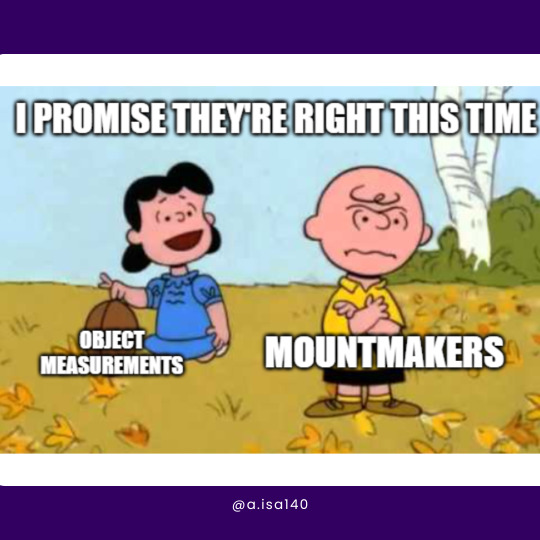






I'm only a conservator here. Who did I miss?
___
Follow for more memes from the GLAM world 🖼📙🗄🏛
GLAM - 🖼Galleries📙Libraries🗄Archives🏛Museums
.
.
.
#curators#conservation#artconservation#preservation#heritage#careofcollections#collectionscare#art#objects#collections#registrar#frontofhouse#mountmakers#museums#conservators#conserve#preserve#misunderstood#jobs#meme#memes#memedaily#museummemes#museummeme#glam
235 notes
·
View notes
Text
Preserving Leaf Paintings in an Anglo-Indian Commonplace Book, 1822-1825
Hello, I’m Alexa Machnik, a third-year graduate student at the Conservation Center, Institute of Fine Arts, NYU. I first came to the Barbara Goldsmith Preservation & Conservation Department in Fall 2022 as a student in the graduate course, Conservation in Context, taught by Laura McCann, Director of Preservation. During this course, we delved into the world of library conservation, exploring the value systems that guide preservation decision-making and treatment action in academic research libraries. One of my class projects involved rehousing delicate leaf paintings from an early 19th-century commonplace book, or friendship album, part of the Fales Library holdings in the Special Collections at NYU Libraries (figs. 1-2) [1]. In honor of Preservation Week, I will share the intriguing history of the book and discuss the decisions that were made to preserve the leaves.

Figure 1 [left]: Front cover of the commonplace book, bound in gold-tooled red morocco leather.
Figure 2 [right]: Ownership label of “Jane Harriet [Blechynden]” on front marbled pastedown.
The book in question was compiled by Jane Harriet Blechynden (1806-1827) in England between 1822 and 1825. It holds her personal collection of handwritten and acquired materials, with contributions from her sisters, Emma and Sarah, who wrote original poems about sisterhood, separation, and their Anglo-Indian ancestry. The three women were the daughters of a British merchant residing in Calcutta, and while born in India, they were educated in England [2]. There is not a great deal known about Jane Harriet’s life in England, but her impending return to India in 1825 is documented in an emotional verse by Emma (fig. 3):
“Thus in parting my sister we’re breaking a link / Which may ne’er be united again / And firm as that chain was ‘tis painful to think / That absence may send it twain.”

Figure 3: Excerpt from the original poem, “Parting and a Meeting,” signed by Emma.
Jane Harriet’s book offers insights into her personhood, social connections, and sensibilities as an artist and collector. In addition to written entries, she inserted a compendium of acquired materials–pressed flowers, her own original drawings, and numerous paintings–between pages of the book (figs. 4-6).

Figures 4-6 [left to right]: A small sampling of the ephemeral treasures found in the book, including a dried pressed flower, a drawing on pith possibly by Jane Harriet, and a cut-paper silhouette.
Notably, six of these paintings are executed on the dried leaves of the Bodhi tree, a sacred plant indigenous to Asia with distinct spade-shaped, long-tipped leaves (fig. 7) [3]. Although leaf painting has origins in Buddhist traditions, by the time Jane Harriet collected her leaf paintings, it had already evolved into a form of Chinese export art in Europe. Her leaves depict secular scenes of contemporary life in China and botanical subjects, which are typical of the export genre (fig. 8). Their inclusion in the book implies that Jane was among the many people who partook in the avid collecting of China trade goods during the first few decades of the 19th century, a time when European fascination for Chinese culture and art was at its peak.

Figure 7: A leaf painting, as found loose in the book and partially lifted to show the thin, translucent nature of the leaf support.

Figure 8: Another leaf painting from the book, oriented with the leaf tip at the bottom of the image, depicting flowers and a butterfly.
The initial rush of excitement that I felt at finding the leaf paintings soon turned to concern as I gave thought to their long-term preservation at NYU Libraries, where researchers are expected to handle the book. The leaf paintings were loose in between the pages, which raised a series of “what ifs” about the potential dangers they could encounter. What if the leaves slip from the book? What if they bend or break as the pages are turned? What if the painted surfaces become abraded? The paintings were made with opaque pigment-based watercolors on exceptionally delicate, skeletonized leaves that have been primed with a thin organic coating. Despite being intact, their inherent fragility means that they are vulnerable to even the slightest touch. After considerable discussion, the Conservation Unit decided that in order for the leaf paintings to be preserved and safely accessed by researchers, they should be housed separately from the book.
I thoroughly examined the condition of the leaves and the painted surfaces in order to make a housing recommendation. Despite some minor damage, all were in stable condition. Thus, the ideal housing would provide support to prevent any further damage, such as paint loss and leaf breakage, and at the same time allow the leaves to maintain their translucency. To achieve this, I opted to mount them in double-sided window mats with a support made from clear polyester film, or Mylar® [4]. The addition of the Mylar® would not only create a stable surface for the leaf paintings but also enable the viewing of both sides (fig. 9).
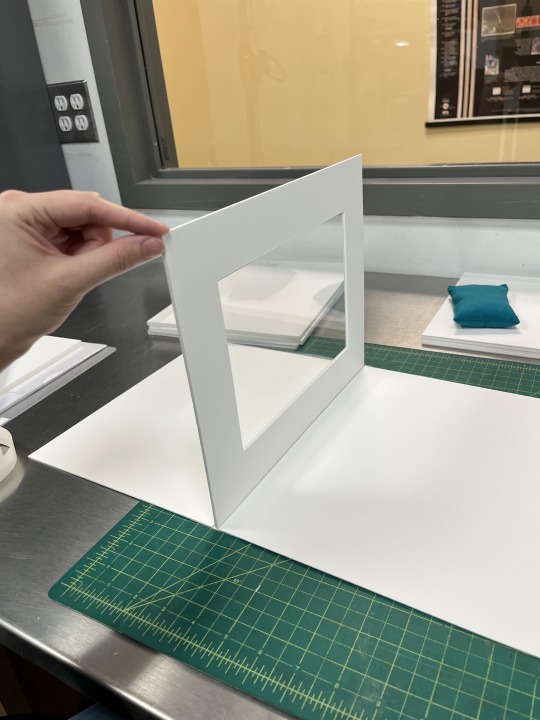
Figure 9: View of the double-sided window mat with a Mylar® support.
My next challenge was to figure out how to mount the leaves onto the Mylar® support without the use of adhesive [5]. After consulting with conservation staff and creating mock-ups, short, discreet Mylar® tabs were selected as the best option to secure them into place (figs. 10-11). For this process, I positioned a single leaf painting onto the support and selectively placed the tabs around its perimeter, making sure the tabs did not overlap any areas of paint. I then used a handheld spot-welding pen to fuse the tabs to the support. Since this process was done in-situ, near the leaf, it required lots of precision practice and encouragement from colleagues before I felt confident enough for the task.

Figure 10: Detail of a mounted leaf painting. Notice that the Mylar® tabs are welded just outside the leaf and extend minimally over the edges, holding it in place with gentle pressure.

Figure 11: The backside of a mounted leaf painting viewed through the Mylar® support. This gives researchers access to the painting’s verso, where an underdrawing and other signs of artistic process can be discerned.
At the time of writing this post, I successfully housed the six leaf paintings in their double-sided window mats (figs. 12-13). This housing project, while complete, is just one part of the ongoing effort to preserve the commonplace book, and the Conservation Unit is continuing work on other elements of the book to ensure its safe return to Special Collections.
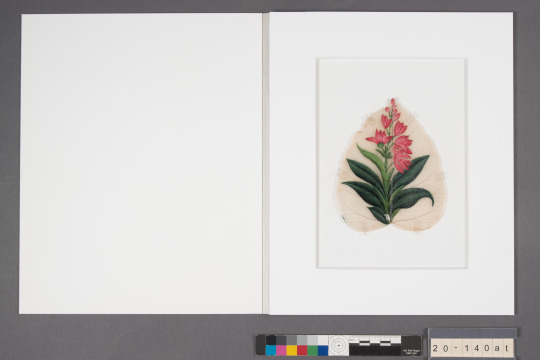
Figure 12: Example of the completed housing, showing the front of a leaf painting.

Figure 13: Back of a leaf painting.
Though my involvement in the project has come to an end, I have gained a very special appreciation for the commonplace book and the preservation challenges it presents. The experience of learning directly from NYU Libraries Special Collections was especially invaluable, providing me with opportunities to participate in complex decision-making processes unique to large research libraries driven by user needs. Before signing off, I’d like to extend my gratitude to my supervisors, Laura McCann, Director, and Lindsey Tyne, Conservation Librarian, and the entire team at the Barbara Goldsmith Conservation Lab for their unwavering support and enthusiasm throughout this project. Thank you all very much!
Notes:
[1] A commonplace book is a centralized place for an individual to record information, whether it be their personal thoughts or quotes from outside literary sources. Friendship albums, by contrast, contain handwritten entries from the family, friends, or acquaintances of the owner (often female). Both forms of commonplacing sustained popularity in Europe and America throughout the 19th century. To learn more about this fascinating literary genre, see Jenifer Blouin, “Eternal Perspectives in Nineteenth-Century Friendship Albums,” The Hilltop Review, Vol. 9, Issue 1 (2016) and Victoria E. Burke, “Recent Studies in Commonplace Books,” English Literary Renaissance, Vol. 43, No. 1 (2013), 153-177.
[2] Much of what is known about Jane Harriet (also known in her family as Harriet) comes from the Blechynden papers in the British Library (Add. Mss. 45578-663). This large holding contains the diaries of her father, Richard (Add. Mss. 45581-653), and older brother, Arthur (Add. Mss. 45654-61). For a secondary account of the Blechynden household, see Peter Robb, Sentiment and Self: Richard Blechynden’s Calcutta Diaries, 1791-1822 (New Delhi: Oxford University Press, 2011).
[3] Michele Matteini, “Written on a Bodhi tree leaf,” Anthropology and Aesthetics, Vol. 75-76 (2021), 45-58.
[4] The design of the double-sided mats is based on an instructional guide made available by the Library of Congress. “Double-Sided Mat,” Library of Congress, accessed 1 February 2023.
[5] We chose not to use adhesives or traditional paper-hinging techniques to mount the leaf paintings for several reasons. As noted, the paintings are on fragile, non-paper-based supports that have an organic coating, which may be derived from plant gum. The leaf supports are thin, translucent, and highly vulnerable to breakage, so applying hinges directly with adhesive might permanently alter their appearance or risk further damage to the leaves over time, especially if they need to be removed from the housing in the future.
Photographs: Alexa Machnik
#NYULibraries#NYUSpecialCollections#FalesLibrary#nyuifa#nyuart#librarypreservation#libraryconservation#collectionscare#artconservation#paperconservation#bookconservation#artpreservation#preservingthepast#PreservationWeek#preservationweek2023
208 notes
·
View notes
Text
ND Preservation video debut!
Our preservation department makes its video debut! Check out our story here:
We’ve made our video debut! Check out this (~2.5 minute) video story featuring our work to preserve the Hesburgh Libraries collections in support of teaching and research.
Many thanks to everyone who helped create this video, especially Zachary Dudka and the Notre Dame Video Services team, for capturing the essence and value of our work!
12 notes
·
View notes
Text
Week 3
Another week down and more registration experiences had! Monday was by far the most interesting day I had this week since so many unexpected things happened. I thought I would be working on my intern projects as usual, and while I was able to make some strides on my work throughout the day I was also able to assist the registration department in some exciting tasks.
Before I get in to that I would like to proudly announce that I entered the final dimensions of the 362 Bruce Davidson photos into the TMS database. Woohoo! It’s a small victory but one that I will gladly take as it feels like it’s been hanging over my head for the past couple months. I started out by helping our registrar, Melanie, enter the dimensions into TMS as she was measuring the photos and calling out the numbers to me (while I was still a volunteer). Not long after, I was able to take the measurements of the photos along side Melanie so we could tackle the project faster. I must admit, however, I was not as quick in measuring the photos at first. I wanted to make sure I had the exact dimensions right and kept on double checking my work, which probably slowed the process down a bit. It was definitely a learning moment for me because from then on I learned to just be confident in my measurements and move on to the next photo. Just before I started the internship, I was given the opportunity to work on measuring the photos and entering them into TMS solo. It felt so wonderful knowing the registration department trusted me to handle the photos properly and take the measurements accurately. And a couple of solo sessions later the project is finally complete! I know that I probably shouldn’t be so excited about completing the data on a batch of objects since that is precisely part of a registrar’s job, but I think in this instance it’s a little more special to me because of the progress I made as an aspiring registrar/collections manager. I started out with just observing our registrar take the measurements and entering them into the database for her to doing the entire process on my own! I love how much I am growing as a registrar here at the Chrysler!
Now on to the other fun things that happened this week! On Monday the registration team helped the art handlers de-install the Nick Cave piece entitled “Soundsuit” in order to give the artwork a rest (especially since it contains textiles) and to display other objects in our collection. It was my first time de-installing a piece and handling an object that was not a photograph, so it was an interesting experience. Some things I observed in the process: wearing gloves is crucial so the natural oils on your hands don’t contaminate the object, strategize how to dismantle the object and make a clear path so it’s easy to transport, and having extra hands and sets of eyes are always helpful (as long as they are trained in object handling and know what to look out for). I’ve learned these things from my collections management class but it was very cool seeing it all in action!
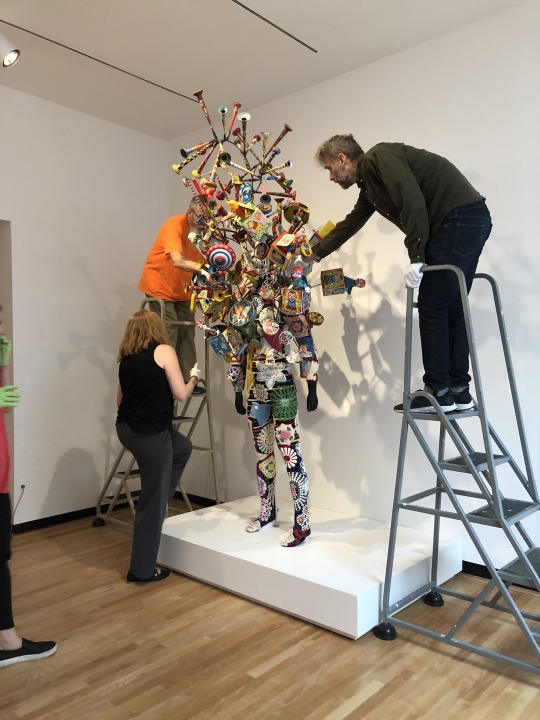
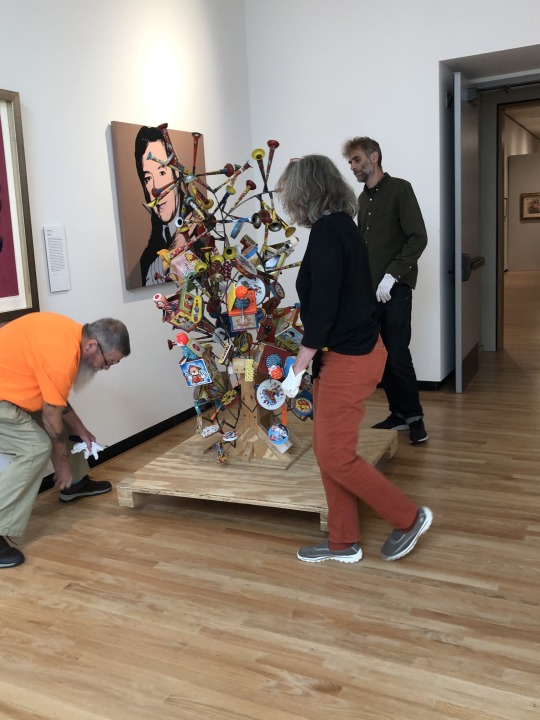
Later that day, our associate registrar, Ali, had to open a safe in our storage to retrieve a coin that needed conservation work. Security is certainly crucial when dealing with museum objects and the registrar plays an important role in the process, so it was great learning about the Chrysler’s security procedures for this task. The coin we pulled out from storage was a 1838 copper token from the Anti-Slavery Society with an inscription that reads: “AM I NOT A WOMAN AND A SISTER”.

At the end of the day, a UC Berkeley Egyptologist that visited the museum last week came back to take detailed photos of the sarcophogi that we have in our collection. The photos he took that day will be used to create 3D models of the sarcophogi for research purposes. Ali and I assisted and monitored the Egyptologist while he was photographing the objects. I’ve learned that as a registrar you not only have to coordinate with those who wish to see an object up close for academic purposes, but to also monitor them while they do it for the protection of the object. I didn’t realize that this was part of a registrar’s job, but it definitely makes sense! Museums are all about providing education and access to the public when it comes to their collection, so allowing a researcher to come and analyze an object certainly fits the bill.
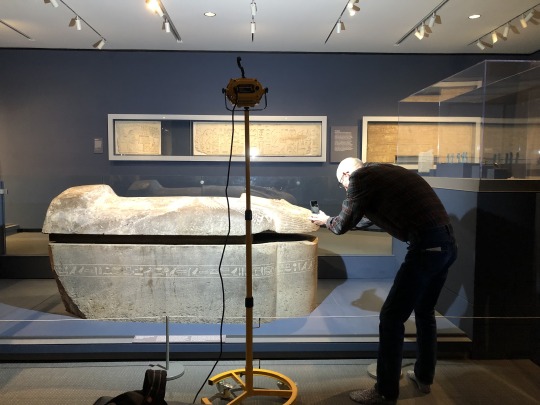
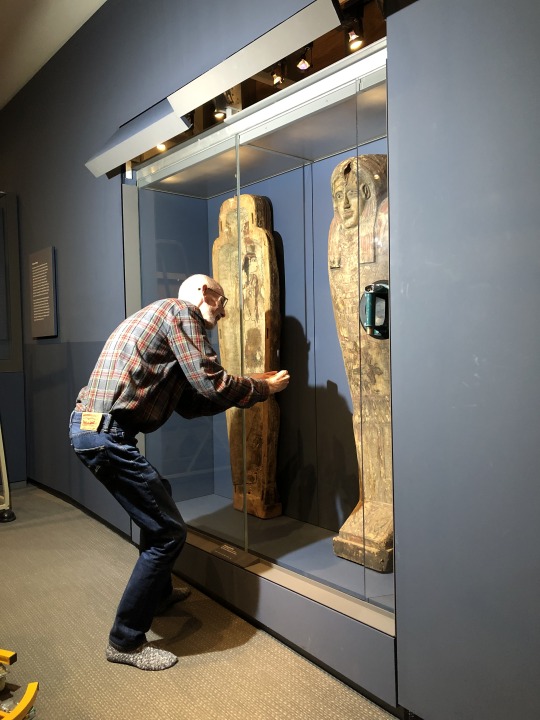
Not too shabby for a Monday, huh? And the rest of the week has been going just as well! Ali and I are currently collaborating with the Corning Museum of Glass to discuss how we can better catalog our glass collection (specifically when it comes to glass nomenclature). We’ve realized there seems to be a bit of a gap in nomenclature within the academic realm of glass so we’re working with our glass curator, Carrie, to address it in our collection. In other news, the Eric Carle exhibition opens tonight!
#museuminternship#museums#museum#ArtMuseum#artmuseums#artCollection#collections management#collectionscare#registration#registrar#internship#INTERN#intern life#museumstudies
1 note
·
View note
Photo

Back at work after my interview at Buffalo State! Had such a wonderful time getting to know the program, current students, and the city.
0 notes
Text

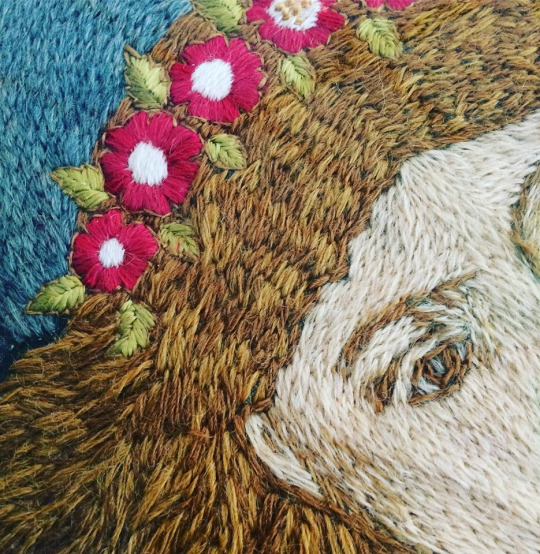
Our glorious Aphrodite embroidered by Jane Morris and Bessie Burden. We have weekly condition checks of the object and monitoring of the environment to ensure we are preserving it #collectionscare #conservationtuesdays #redhouse#janemorris #bessieburden
27 notes
·
View notes
Video
At home on a sunny day, spend a few minutes in different rooms during the morning, afternoon, and evening. Notice the light and where it’s focused. Paper, fabrics, and furniture are especially vulnerable to light, heat & humidity extremes. #TipTuesday #preservation #collections #collectionscare #lightdamage #savewhatyoulove via @RiplApp
0 notes
Photo
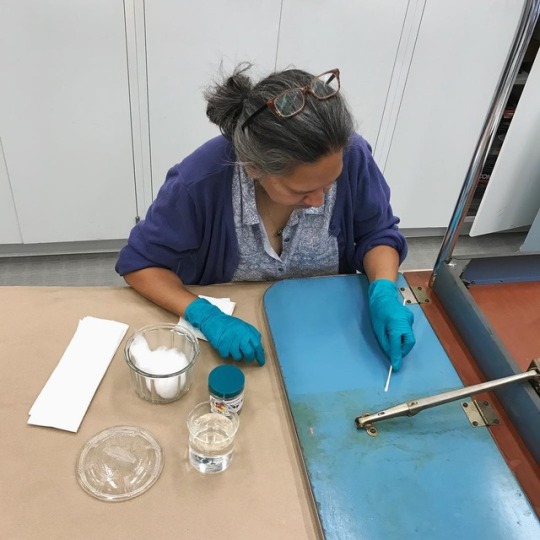
In the CHM conservation lab, Maria Paras is cleaning a chrome steel and Formica kitchen table, reducing corrosion, and stabilizing the metal trim around the top. Made by the @cityofstcharlesil-based Howell Company, the drop-leaf table is an example of modern American design that emerged during the 1930s. See it on display when “Modern by Design: Chicago Streamlines America” opens on Saturday, 10/27. #ChicagoModern #ChicagoHistoryMuseum #whenyouworkatamuseum #designhistory #collectionscare https://ift.tt/2QCXDCZ
0 notes
Photo

Oh, my! This costume is fabulous enough enough for @TheAcademy #Oscars - Courtesy @metcostumeinstitute: . #MuseumLife Research Associate, Tae Ahn, was recently tasked with the responsibility of overseeing the transport of a very challenging object: a welded, undulating, metal-framed skirt stretched with an overlay of #Swarovski-crystal-festooned mesh from #AlexanderMcQueen’s spring/summer 1999 collection, No. 13 (swipe for a 📷). The rigid, oversized piece needed to be hand-carried through narrow hallways necessitating advanced stabilization and protective covering. Ahn’s initial planning for the custom mount and cover required meticulous measurements and creative problem solving. . Check out their PROFILE to see the second leg of the skirt’s journey. // Skirt (part of ensemble), Alexander McQueen (#British, 1969–2010), spring/summer 1999; Purchase, Irene Lewisohn Bequest and Millia Davenport and Zipporah Fleisher Fund, 2008 (2008.21a–c) 📷of Ahn at work: @onmywallinthe90s; runway📷: @swarovski archives (sourced online at www.swarovskicollective.com) #collectionscare #mcqueen #swarovski #custommounts #fashion #costumeinstitute #themet @alexandermcqueen @ebaybae @taeinahn @saruzzza (at The Metropolitan Museum of Art, New York)
#swarovski#costumeinstitute#themet#oscars#fashion#custommounts#museums#museumworkers#museumworker#museum worker#artists#curators#museos#museus#museet#museumviews#museum life#museumlife#imwd2018#imwd2019#imwd
0 notes
Text
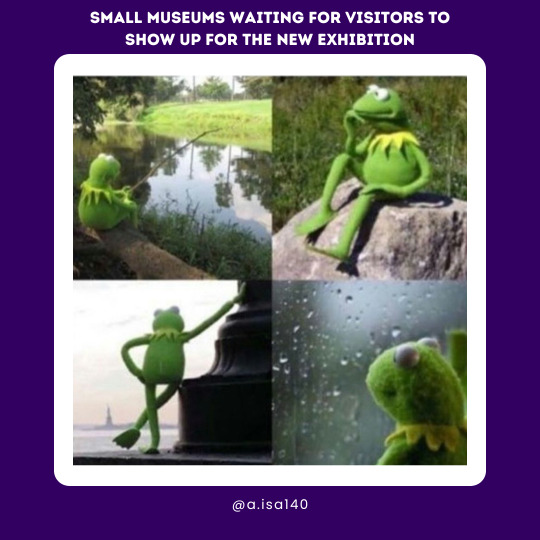
You put all this effort in, and now all there is left to do is wait. Tell us what you've tried to make people show up? What works? What doesn't work?
___
Follow for more memes from the GLAM world 🖼📙🗄🏛
GLAM - 🖼Galleries📙Libraries🗄Archives🏛Museums
.
.
.
#conservation#artconservation#preservation#heritage#careofcollections#collectionscare#objects#collections#museums#materials#preserve#meme#museummemes#memedaily#itsover#display#kermit#exhibition#galleries#visitors#museumvisitors#culture#museum#memes#memer
59 notes
·
View notes
Text
Preservation Week 2023
Virtual Presentation: Conservation of Balinese Shadow Puppets from the Mabou Mines Archives
Date: Tuesday, May 2, 2023, 1:00 - 2:00 PM (EST)
Location: Virtual Event/Zoom
Registration: https://nyu_preservation_week_2023.eventbrite.com
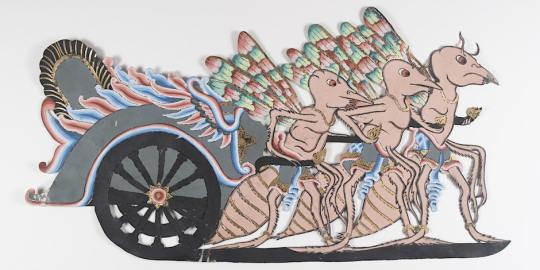
Image: a Balinese shadow puppet from the Mabou Mines Archive, NYU Special Collections.
Since last November, Conservation Center student Peiyuan Sun has been conducting research and conservation treatment on a group of Balinese shadow puppets from the Mabou Mines Archive (MSS.133). In this presentation, she will talk about the information that she has discovered regarding the history and manufacture of these materials and the ways in which she is actively working to make these items more accessible to future users.
Peiyuan Sun received her B.A. in Art History from NYU in 2018. She is in her final year at NYU’s Institute of Fine Arts, where she is a candidate for an M.A. in Art History and M.S. in Conservation of Historic and Artistic Works. Since fall 2022, Peiyuan has been working as an Andrew Mellon Fellow at the Barbara Goldsmith Preservation and Conservation Department for her curriculum internship under the supervision of Preventive Conservator Jessica Pace.
This event is presented in celebration of Preservation Week, an annual initiative of the American Library Association aimed at connecting our communities through events, activities, and resources that highlight what we can do, individually and together, to preserve our personal and shared collections.
#PreservationWeek2023#PreservationWeek#NYULibraries#NYUSpecialCollections#FalesLibrary#nyuifa#nyuart#librarypreservation#libraryconservation#collectionscare#artconservation#artpreservation#preservingthepast
26 notes
·
View notes
Text
Preservation Week Tuesday Tip of the Day
Spring Cleaning: Preserving Physical Collections at Home

Are you getting restless at home and looking for a new challenge? Do you have boxes of important personal documents and favorite books hiding “somewhere” in your basement or attic? Now is the perfect time to pull those out and reassess your preservation strategy.
Consider storing those boxes somewhere else—basements and attics are notorious for leaks and flooding (especially in Spring). If that isn’t an option for you, try to get them off the floor. It doesn’t have to be far. Wood pallets work well and you can get them for little to no cost. Ask your local small businesses. They’re usually happy to help—especially if it helps them free up some dumpster space!
Check out these links to The Library of Congress and the New York Public Library for more ideas on how to care for your personal collections.
3 notes
·
View notes
Text
Week 2
How can it only be Week 2 of this internship and I’ve already learned so much?! My days at the Chrysler have been filled with many exciting things and I’m understanding more and more about how a museum operates and how the registration departments takes part in its success. I’ve sat in on meetings focused on preparations for upcoming exhibitions (one for glass and the other for a photographs) and I’ve learned that the registration team is an integral part of the planning process. Registrars assist curators in the planning of exhibitions in a number of ways: gathering information for the desired objects within the collection, providing insight for the details of an incoming exhibition (i.e. packing and transportation, copyrights, etc.), and offering suggestions about the care of the objects before they are put on display. This week I was involved with the latter.
I helped Ali, the associate registrar and my supervisor, find the storage location of 73 photographs that will potentially be used for an upcoming exhibition and made sure the photographs were in good condition and at least matted if not framed. We took measurements of the matted photos so they can be outfitted for frames, documented our notes, and sent the suggestions to the curator (who will be involved in deciding if they will use the photo) and the art handlers (who will be matting the photos and properly placing them in the frames). I really enjoy this aspect of collections management/registration because I get to work with objects in person and receive the object-handling experience I need to do this job well.
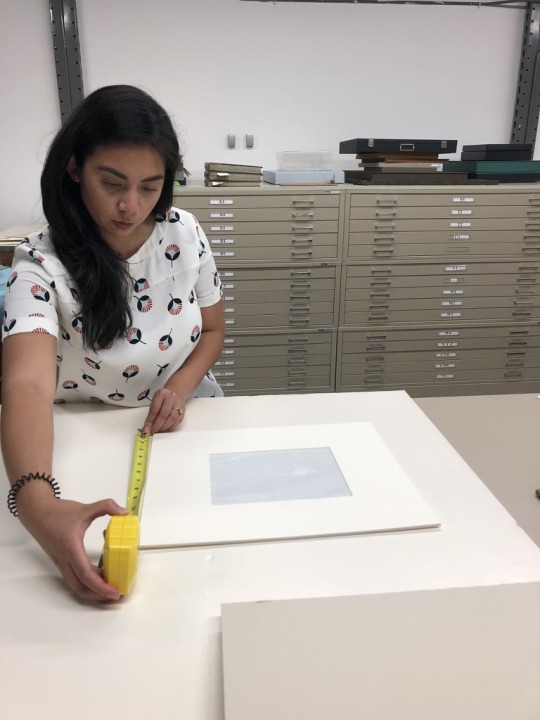
Another project I started on this week was the handbook (which I will now refer to as the data dictionary) for standardizing object record data in the database system. I went through the TMS database and began gathering information regarding the data fields that are typically used for cataloging an object. Fields such as “title”, “date”, “culture”, “object description”, etc. need standards by which a staff member can easily understand how to fill out the data element. I will be using museum cataloging standards along with the department’s preferences to create a data dictionary that staff members can refer to when necessary. It’s quite a process, but well worth it!
We also took our first intern field trip yesterday to the Muscarelle Museum of Art in Williamsburg, VA to learn about their community efforts in educating the public about art. Our group also had the opportunity to take part in a community art project for the Director of Engagement and Distinguished Artist in Residence of the Muscarelle Museum, Steve Prince. We were given pieces of wood and had to create our own design related to the concept of “1619-2019″ (when the first African slaves arrived in Virginia to today). We used the woodcut relief process to create our designs, which will then be pieced together with other community members’ work so that it can be printed on a large steam roller. It was such a cool experience and I’m glad I was able to participate in this meaningful work!

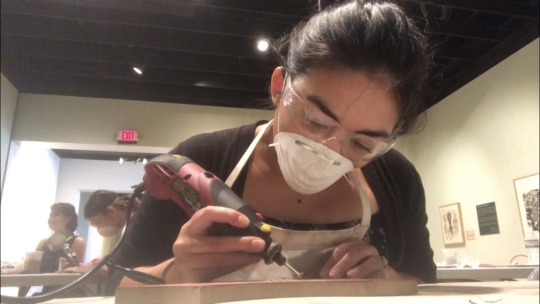
And last but not least, I FINALLY finished taking measurements for the 362 Bruce Davidson photos we acquired recently. I started this task a couple months ago (when I was a volunteer for the Chrysler) and completed the project yesterday after the field trip. Now I just need to enter the last batch of dimensions into our TMS database!
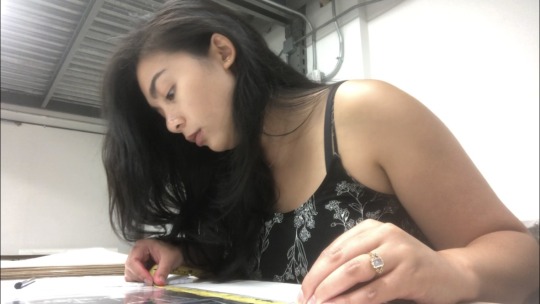
Until next time, museum lovers!
Jen
#museuminternship#museum#ArtMuseum#museumcatalog#registrar#registration#collectionscare#collections management#museums#artmuseums
1 note
·
View note
Photo

When you're a conservation student, you're taught that every object requires intense background research before any actions are taken. You can spend several weeks finding out interesting details about an object that will inform your intervention.
When you start a museum job in what we call "bench conservation" (meaning you sit down - presumably on a bench - and work on the objects), you might get given 20 things and told they need to be done by yesterday, so extra care will need to be taken and maybe extra off-work hours too!
So, if you're a student, enjoy your research time! Chances are you'll never have as much of it again after you graduate.
___
Follow for more conservation and museum-related memes.
#research#conservation#artconservation#preservation#heritage#careofcollections#collectionscare#art#collections#restoration#artrestoration#museums#conservators#preserve#conservationrestoration#protectandpreserve#memes#memer#meme#memedaily#museummemes#museum#museumconservation
92 notes
·
View notes
Text

True story. I heard this at a webinar on collections management when you have weapons in your collection. Watch your unexpected visitor donor pull a pin out of an old grenade just to "prove" to you it doesn't work. Who can say museum work is boring?
___
Follow for more memes from the GLAM world 🖼📙🗄🏛
GLAM - 🖼Galleries📙Libraries🗄Archives🏛Museums
.
.
.
#conservation#preservation#careofcollections#conservators#conserve#preserve#meme#museumlovers#collectionscare#art#objects#heritage#lifeofdanger#donations#pleaseno#stop#weapons#warmuseum#registrar#materials#museums#museum#museummemes#collections
50 notes
·
View notes